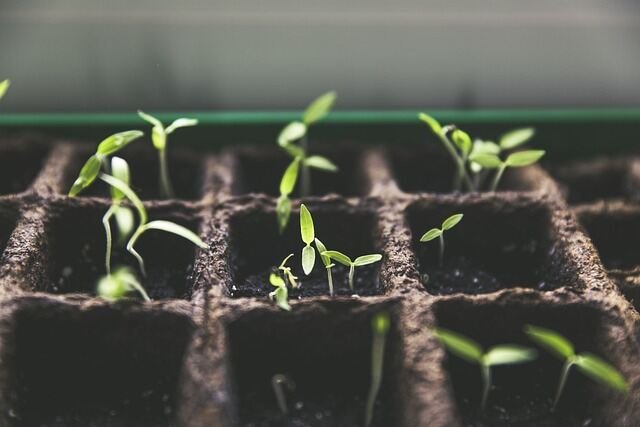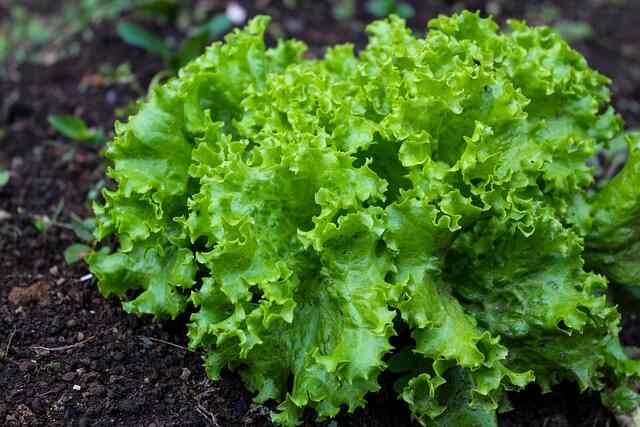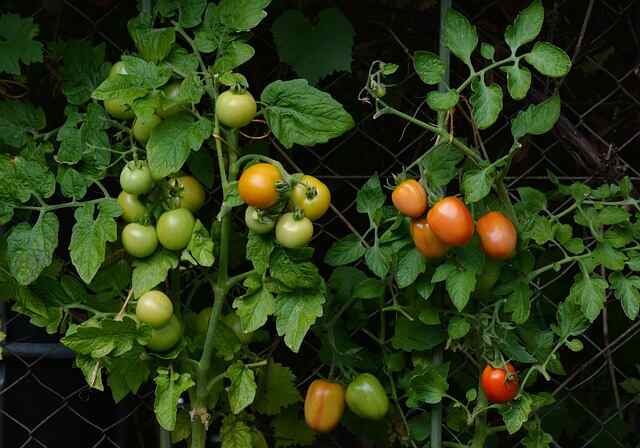Welcome to another very exciting episode.I am super excited about today’s article because it’s going to be talking about something that I think is really important, not talked about enough, and it’s something that’s really going to help you guys grow more food in less space. That’s something we really try to drive home a lot because you know space is a commodity, and it’s a limited amount of it. So we have to really use it to the best of our abilities so we can grow more food for our families. So, I’m really excited about this, and let’s get on into it. It’s a beautiful day, nice 75-degree day with some breeze. So hopefully, we don’t have too much cloud cover rolling in and out. But either way, we’re gonna have a good day. Hope you guys are gonna enjoy this one.
So what are we talking about today? Well, we’re talking about a question that was brought up when we were planting up and staking up our tomato plants. It was worded something along the lines of, ‘I don’t have it in front of me, but it was worded kind of something along the lines of, “Luke, if we’re staking up our tomato plants and growing vertically rather than horizontally, which you should be, it’s a great way to grow. If we’re growing in that method, isn’t there going to be a lot of wasted space around the base of the tomato plants that would usually be a tomato plant but now is bare soil?” And the answer is yes, there is going to be a lot of wasted space. If you don’t plant something, wasted space is only wasted if you don’t use it.
So how are we going to fix that problem? Well, first, I want to talk about how it… you know, the things that can be caused from leaving your bed space empty like that. And then I want to go into some plants that you can plant there because it’s very, very important to do something called intercropping. Now, intercropping is what we talk about all the time that increases the diversity in our garden. You know, we have a tomato bed, we have a lettuce bed, we have a pepper bed or a potato bed. As gardeners, we really like this kind of orderly beds kind of layout, but it can do some negative stuff to our garden. The one thing is with pests, you know, pests, they hone in on a specific crop, right? Tomato hornworms, they hone in on tomatoes. We talked about all the time with the cabbage moths, the cabbage loopers, they hone in on the cabbage plants or brassicas. If you look at squash, with squash vine borers, they hone in on squash or cucurbita crops. So what you want to do is you want to intercrop because it helps with pest control. You know, if you’re an organic gardener like I am, increasing the biodiversity increases the amount of pheromones and scents being spread around which can help mask the scent of these tomato plants so you don’t have nearly as many pest problems as you would normally. So that’s the first thing that’s going to help.

The second thing that intercropping is going to help with is it’s going to cover the soil. We talk about all the time how having bare soil like what’s behind me is not that good of a thing. We’re going to fix that, trust me. We’re not going to have this bare soil for very long because bare soil, when it’s bare, it opens up to soil degradation from the sun. When the bright sun beams down on the soil like it is today, all this soil here actually loses life. It loses its vitality because it’s baking the soil. It’s actually solarizing and killing off all the beneficial bacteria that’s found in the soil, or this top little layer of soil. It’s not good because that’s where a lot of your life is found. That’s why we want to cover it as soon as possible. So it’s degrading the soil from the sun. When the wind blows really hard, the wind can blow away topsoil. If it rains really hard, it can wash away topsoil or wash nutrients out of the soil. So it’s degrading the soil in that manner. And also, it opens up the soil to weed seeds. Weed seeds are blowing all around this time of year, as you probably see. There’s quite a few cottonwood fuzzies blowing through the field of view there. And those cottonwood seeds or grass seeds or any seed for that matter, dandelion seeds, they can land on this bare soil, and they’ll take advantage of it, and that causes more work for you.
The solution to fixing all those problems and all those negatives is by planting something good here, something that’s going to grow food for your family. That way you’re growing a crop here that’s going to be covering the soil, acting as a living mulch that’s going to protect the soil. It’s actually going to help with evaporation because there’s going to be more shade on the soil, meaning water won’t evaporate from the soil as fast, many of your crops are going to have more access to that moisture to grow. It’s going to keep the soil covered, it’s going to keep pests from coming into your plants because it’s going to help with the biodiversity. It’s going to take up the soil space where weed seeds would normally germinate.

So what do we plant here? What can we plant here? You can intercrop with a bad plant and cause some negative side effects. You see, tomato plants are very heavy feeders, and one of the biggest mistakes I see people making are planting crops that are very heavy feeders in with their tomatoes. So if you have two heavy feeders and there’s only so much food to go around, you’re going to have an issue.
There’s going to be some competition there, and that can cause stress. The first thing we want to look at is how much sun the beds get with the tomato plants growing. You see, right now, the center of the bed is pretty well shaded. There’s not a lot of access to sunlight because of how closely the tomato plants are planted together. But the outside of the bed has nice full sun. So this allows us to do a couple of things. We can plant some shade-loving or, you know, cool weather crops inside the tomato, or not inside the tomato plants, but inside the center of the bed that has a little bit more shade. We can plant some more sun-loving crops on the outside.Beans are sun-loving crop.They can give nitrogen back to the soil. So beans would be a great crop to grow on the outside.
Something that you could grow on the inside would be things like herbs. Herbs don’t require a lot of nutrients. Things like thyme, sage, oregano, basil. They don’t require a whole lot of sun. They don’t require a whole lot of nutrients, and they would grow great as an understory crop. Thyme specifically is a great crop that can even handle some neglect. So we love thyme because of the fact it’s a low-growing ground cover, it protects the soil, it grows a lot of food in a small amount of space, and the fact that it can handle the shade that the tomato plants give off.
Another crop that you can plant within your tomato plants is lettuce. Lettuce is a wonderful crop that likes the shade, does not like the nice hot sun because that’s why it bolts is because of the stress from the sun. So use that as an intercropping. A plant that I would not recommend is spinach. Spinach is a very heavy nitrogen feeder, and it will compete whereas lettuce does not take up nearly as much nitrogen, and the tomato plants and the lettuce can co-exist.
Another crop that you could plant are radishes. In early season, you know, right now it’s a little bit too warm for radishes, but in early season, plant some radishes. Radishes love the shade, and in fact, they’re going to actually do better in the shade than in the hot sun where they can often bolt if the sun gets too hot.
Another crop that I don’t see growing around tomato plants enough are your root crops. Things like rutabagas, parsnips, carrots, beets, radishes. We even talked about radishes earlier, but those root crops are great to plant around tomato plants because of the fact they don’t use a lot of nitrogen. They actually use more phosphorus for their root development, and these are great things to plant around tomato plants because when the tomato plants take up a lot of nitrogen, oftentimes the reason why you don’t get large beets, or the reason why you don’t get large radishes, or the reason why you don’t get large carrots is because there’s too much nitrogen. They actually will coexist extremely well because of the fact that the nitrogen causes the radishes or the carrots to grow beautiful tops but no root, right? So if the tomatoes are taking up the nitrogen, the root crops can actually focus more on root development rather than leaf development, and this is something that I just don’t see being done enough in the garden, and it’s something that can really help grow a lot more food in a lot less space.
Also, one of the really nice things about planting things like carrots is their foliage is very sparse. If you plant something like, say, broccoli, broccoli would be a very not smart plant to put here because they get really tall. So they’re going to interfere with the growth of the tomato plants. They like a lot of sun, so they’re going to be competing for the sunlight as well as the space with the tomato plants. They take up a lot of nitrogen, like the tomato plants do, and also, they also have huge leaves which are going to restrict that airflow, whereas something like a carrot, carrots have wispy thin leaves, and that means that airflow can get through those leaves very easily, and they’re not going to block airflow which can cause blight and other mildews and fungus attacks and things like that on your tomato plants. So they coexist very well like that.

All your other crops, you know, beets, they all have pretty low foliage. So if you prune your tomato plants up, it’s going to give you nice access for air to still flow underneath your plants. Tall plants like that, like a broccoli or Brussels sprouts, things like that that just get really tall, not very smart to plant under your tomato plants.
Another crop that I just don’t see being planted enough underneath tomato plants are flowers. Flowers are so great to intercrop with tomatoes because of the fact it not only increases pollination from insects, but it also acts as natural insect repellent. Things like marigolds are fantastic to plant around tomato plants. There have been some studies that show that marigolds help reduce aphids, help reduce tomato hornworm, and also help reduce soil-borne nematodes. So soil nematodes are something that plagues a lot of different crops, and marigolds have a chemical found in the root system that actually repels the nematodes. Violas, they don’t like a lot of that bright sun because they actually are more of a cool weather flower. Plant your violas and stuff inside the bed. Things like lavender, lavender is a fantastic crop to grow. Grow some lavender here. They love the nice full sun, and they’re going to do great.
So edible flowers are another great crop to grow. It’s gonna be a nice smart planting that you can grow to take up this extra space. And the final crop that I would love to see more of you guys plant in your garden around your tomato plants are onions. Onions grow great and co-exist totally fine with tomatoes. One of the things that you want to do is you want to grow crops that don’t restrict airflow, right? Well, onions are one of the least air restricting crops of them all because in fact, their leaves are really tall but really spindly. So even if they grow up into the tomato plant, they restrict no airflow at all. They won’t compete for nutrients, and they take up very little space in terms of bulb size. So they can coexist really well.
So those are the crops that I’d recommend putting in and around your tomato plants. It’s a great way to grow more food in less space.



